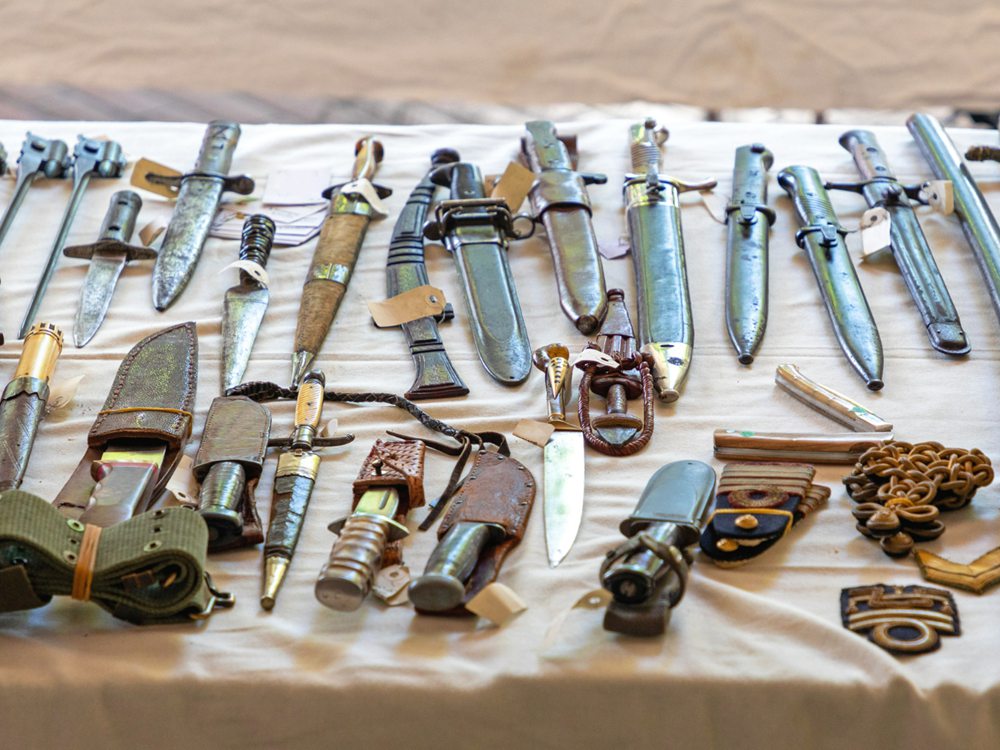

Antique knives hold a special place among collectors as they represent a fascinating piece of history, with some dating back hundreds of years. Each knife has a story to tell, often reflecting the era and culture it comes from. As you delve into the world of collecting antique knives, you’ll want to develop your skills in identifying and valuing these unique and fascinating items.
To spot antique knives, pay attention to details like thick metallic blades, wood or metal handles, and unique carvings. Handmade imperfections and metal sheaths can also provide clues to a knife’s age and origin. Some of the most valuable antique knives are weapon-like or dagger style with bare metal, wood, or black handles. However, even intricately carved knives with composite gold or silver blades can fetch a high price.
Aside from examining physical properties, you should learn about maker’s marks and distinctive symbols that can uncover the knife’s history and its significance in the world of antiques. These marks can range from names, initials, small illustrations, logos, series of numbers, or lines. Remember, part of the fun of collecting antique knives is learning the stories they’ve lived, and proper identification is the first step in their journey with you.
Table of Contents
When identifying antique knives, the first thing you should look for are maker’s marks or distinctive symbols. These marks can range from a name to initials, a small illustration or logo, a series of numbers, or even a few lines. Brands like Remington and Bowie are known for their vintage knives, and their marks will help you verify the authenticity of a piece.
The materials used for the handles of antique knives can impact their value. Some common handle materials you may find include:
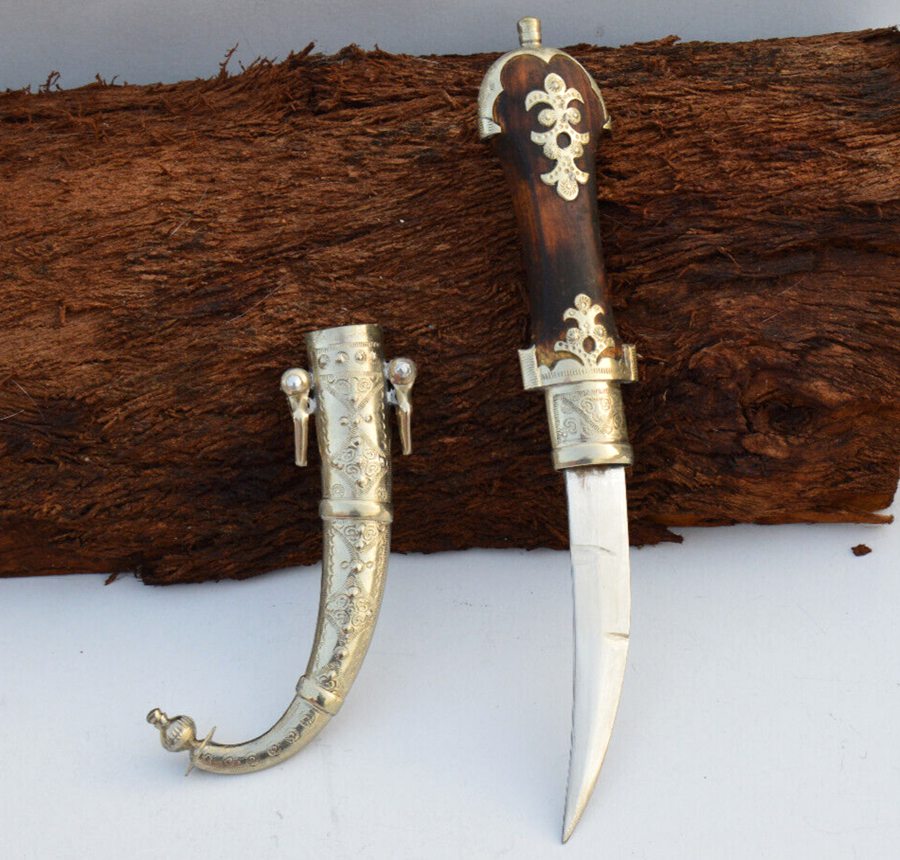
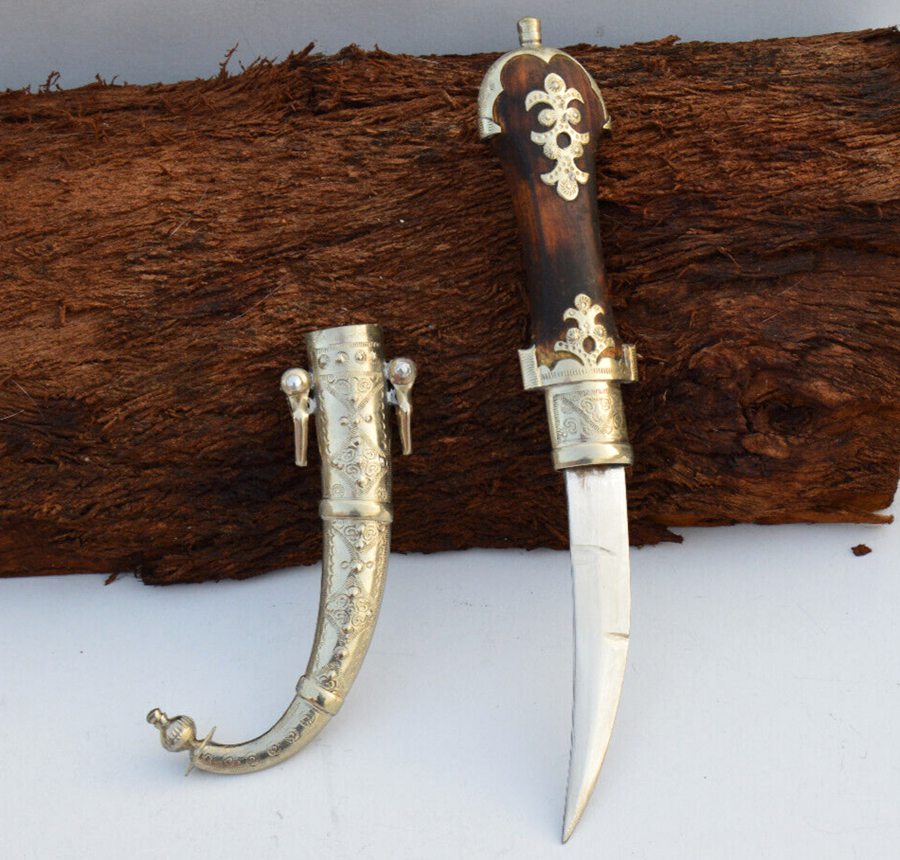
When evaluating handle materials, pay close attention to the craftsmanship and detail as well. Carvings, engravings, or other decorative features can further increase the value of a knife.
Another important aspect of identifying and valuing antique knives is the blade style. Some common blade styles and their respective values include:

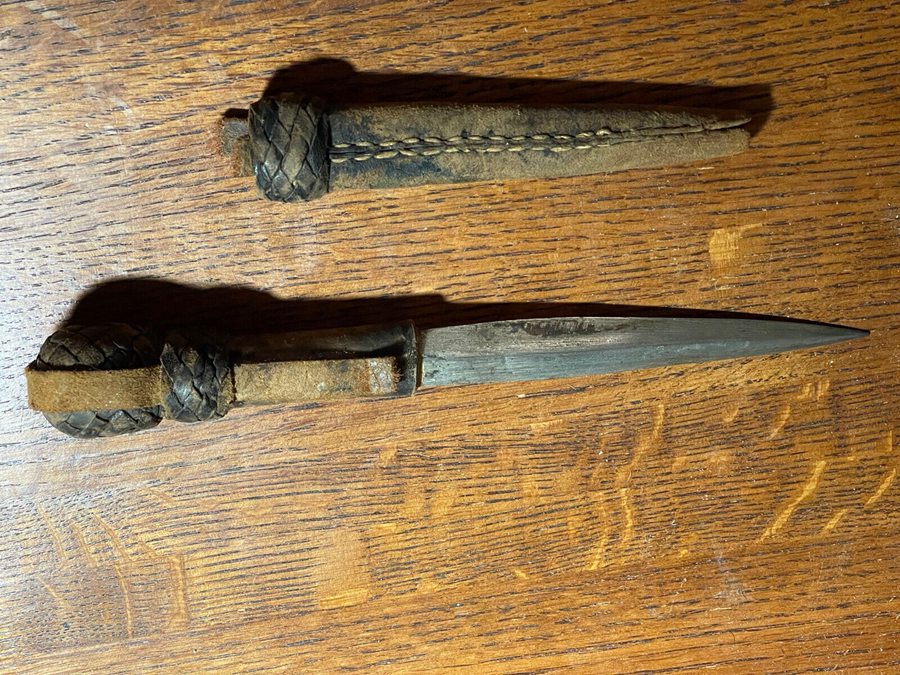
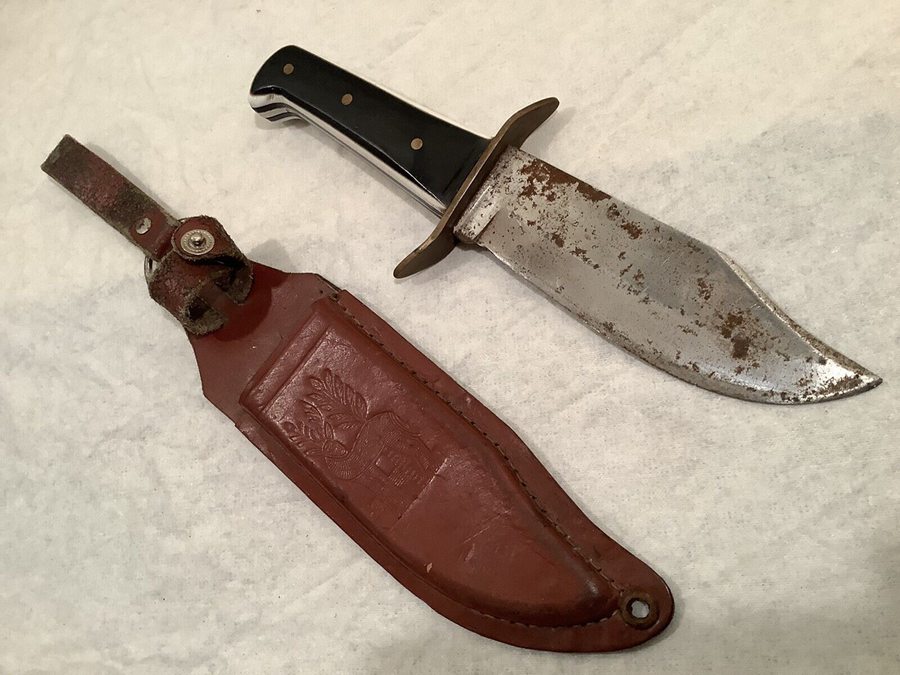
To make your valuation process easier, refer to the table below for an overview of different blade styles and their associated values.
| Blade Style | Value Range |
| Pocket knives | $50 – $500 |
| Dagger knives | $150 – $1,000 |
| Vintage Bowie knives | $250 – $2,500 |
Remember to consider the knife’s condition, age, and rarity when determining its value. Antique knives in pristine condition with clear maker’s marks are more valuable than those with significant wear or damage.
In this section, you’ll learn about the popular antique knife brands and their valuation. We’ll cover Case Knives, Remington, Winchester, and Queen. Understanding the values of these knives can help you make informed decisions when it comes to buying, selling, or collecting antique knives.
Case is a well-known brand in the world of collectible knives. Established in 1889, they have been producing high-quality knives loved by collectors around the world. Some of the most sought-after Case knives include:
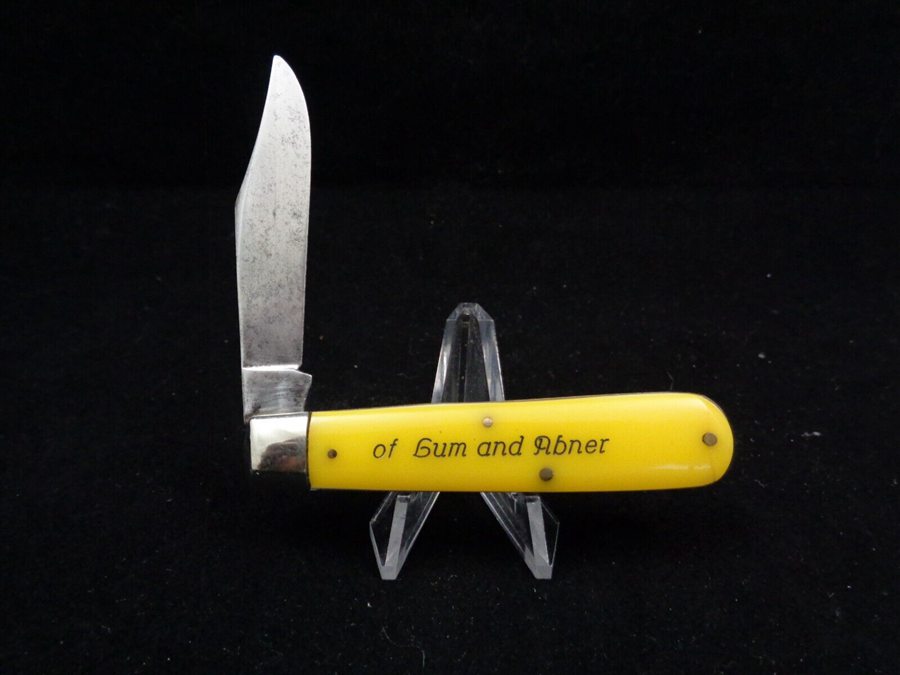
To determine the value of a Case knife, examine the following factors:
Remington is another respected brand in the antique knife market. Their knives, which were primarily produced between 1920 and 1940, are known for their quality and durability. Some popular types include the Remington Bullet Knife and the Remington R1123 Trapper.
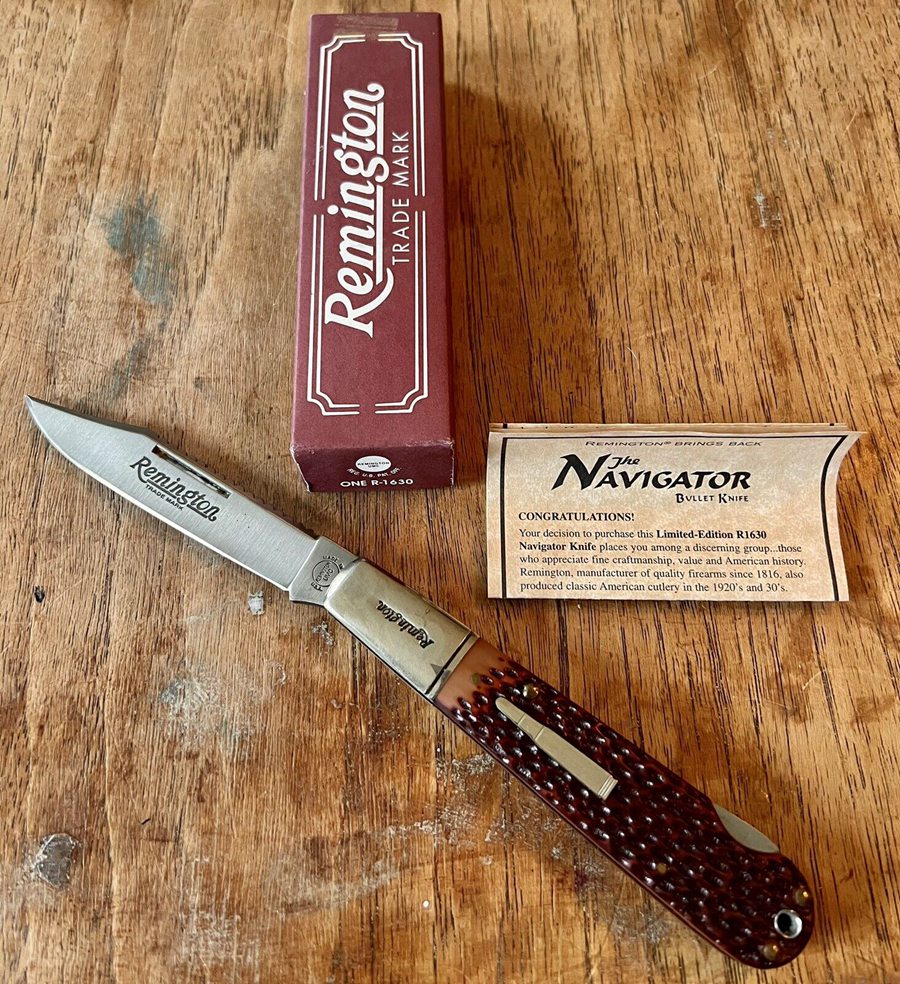
When estimating the value of a Remington knife, consider the following:
Winchester started producing knives in the early 1900s and discontinued knife production in the 1940s. As a result, authentic Winchester antique knives are quite rare and desirable among collectors.
To assess the value of a Winchester knife, take into account:
The Queen Cutlery Company began manufacturing knives in 1902 and is still active today. Their early 20th-century knives are highly sought after by collectors.
In determining the value of a Queen knife, consider:
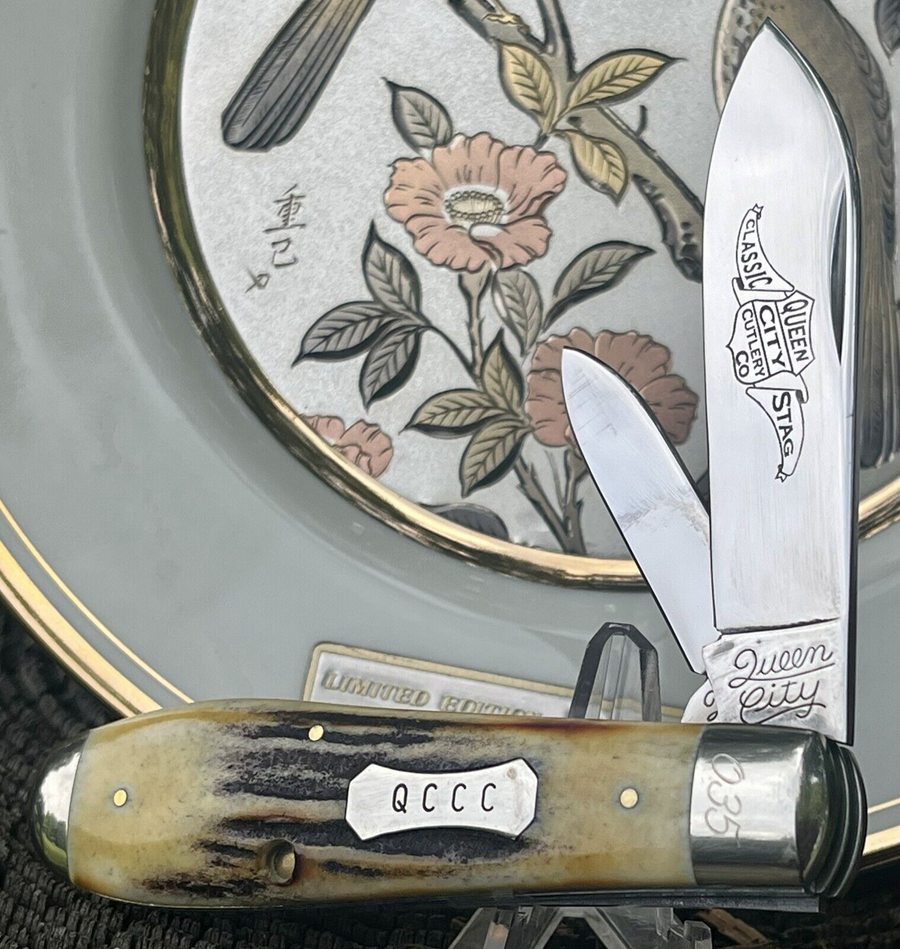
To become an expert in identifying and valuing antique knives, continue expanding your knowledge of knife brands, familiarize yourself with design characteristics specific to each brand, and learn the factors that influence their value in the collector’s market.
Assessing the condition of your antique knife is crucial in determining its value. When evaluating your knife’s condition, consider factors such as:
Typically, knives in better condition fetch higher values.
Rarity plays a significant role in antique knife valuation. Keep in mind the following factors:
A rarer knife usually commands a higher value.
Determining the age of your knife can shed light on its value. Look for clues, such as:
Older knives may have higher values, especially if they are well-preserved.
Demand is another factor that affects antique knife values. Factors that influence demand include:
Higher demand often leads to greater value.
| Condition | Rarity | Age | Demand | Value Range |
|---|---|---|---|---|
| Excellent | High | Pre-1900 | High | $$$$ |
| Good | High | Pre-1900 | Moderate | $$$ |
| Fair | Moderate | 1900-1950 | Moderate | $$ |
| Poor | Low | Post-1950 | Low | $ |
By considering these four factors and consulting reputable resources, you can have a better understanding of your antique knife’s value. Remember to keep your expectations realistic and avoid exaggerated claims when discussing values with potential buyers or fellow collectors.
As an antique knife collector, there are several price guide books you can refer to for identification and value information. Two of the most notable books include:
There are numerous websites and online forums where you can connect with fellow collectors, gain insights about your knives, and ask questions for expert help. Some popular options to consider:
To expand your antique knife collection or sell your items, it’s important to explore auctions and dealers. Some methods for finding these resources include:
Remember to keep your search and involvement with dealers, auctions, and online platforms thorough but focused in order to make the most of your collecting experience.
When building your antique knife collection, it’s important to store and display them properly to preserve their value and condition. Consider the following tips for storage:
As a collector, you’ll continually buy and sell vintage knives to enhance and evolve your collection. Here are some tips for making informed decisions:
Proper documentation of your antique knife collection is essential to preserving its value and history. Keep the following elements in mind when archiving your collection:
By following these tips and guidelines, you can build a unique and valuable collection of vintage knives that you’ll cherish for years to come. Remember, patience and research are key, and there’s always more to learn in the world of antiques and collectibles.
In your journey to identify and value antique knives, it’s essential to pay close attention to details. Keep in mind that maker’s marks, distinctive symbols, and unique designs can be helpful in determining the provenance of the knives.
Remember that antique knives often come with thick metallic blades, wooden or metal handles, carvings, and metal sheaths. Be cautious of signs of aging, as some might be artificially induced to deceive collectors. Trust your instincts and use available resources, such as price guides and collector’s forums, to seek knowledge and advice.
As you build your collection, appreciate the history and craftsmanship behind each piece. By understanding the unique heritage and value of antique knives, you can refine your collection and make educated decisions on acquiring new items. Most importantly, enjoy the process of collecting and learning about these fascinating and functional pieces of art.
How useful was this post?
Click on a star to rate it!
Average rating 5 / 5. Vote count: 5
No votes so far! Be the first to rate this post.